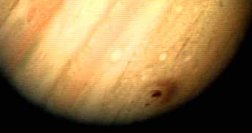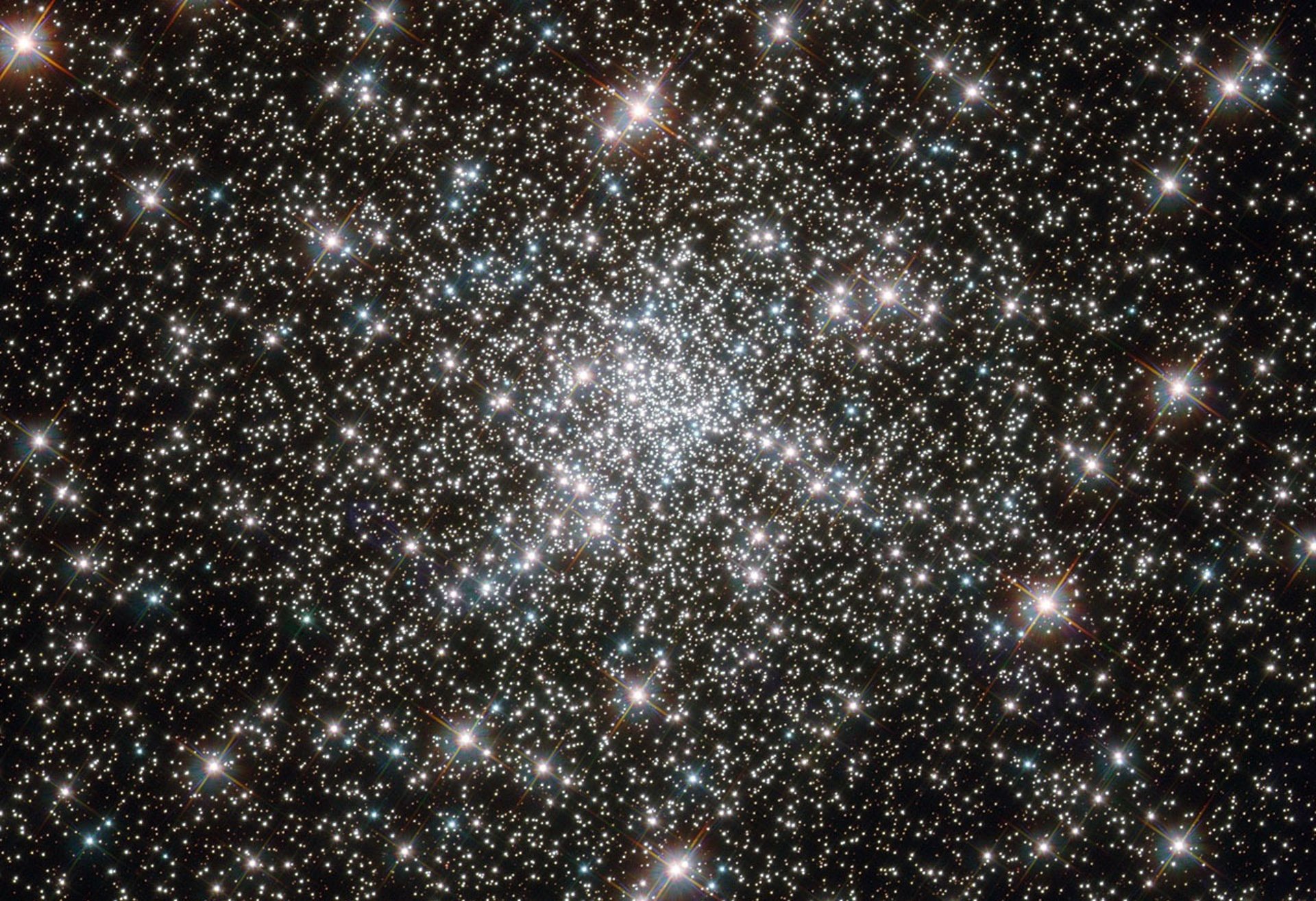
Astronomy Questions
If you are a newcomer to astronomy you will come across lots of talk about stars, galaxies, meteors etc, but what are all these things? What makes the stars shine? why do they twinkle? what is the difference between a meteorite and a meteor? what is a shooting star?
Hopefully you will find the answers to many questions you have by clicking on the sections below. In each section there are some of the more frequently asked questions on the subject.
Questions about Stars
What is a Star?
Stars are essentially huge balls of gas (mainly hydrogen). The extaordinery amounts of bright light and heat they emit is caused by nuclear reactions happening within the star. Perhaps the easiest way of describing what is happening inside a star is to explain how they are born:
Stars are born in vast clouds of gas and dust. Dense clumps start to form in these clouds and these clumps start to exert gravitational pull. They start to suck in more gas from the surrounding cloud and this increases their gravitational pull which sucks in more gas. This cycle continues and just like a haystack in summer the inside of the protostar starts to get very hot. If enough material is is hoovered up from the surrounding gas and dust, the protostar will hit a critical point in its life. As the core temperature reaches about 10 million degrees centigrade it ignites, nuclear reactions begin and as they say in Hollywood a star is born.
With its own gravity trying to collapse the star inwardly and the nuclear reactions trying to blow the star apart it manages to find an equilibrium and will settle down to burn for anything between a few million years and thousands of million of years. (Our sun is about half way through its 10,000 million year life cycle.)
Why do stars twinkle?
Stars twinkle because we are viewing them through thick layers of turbulent air in the Earth's atmosphere that slightly distort our view. The closer the star is to the horizon the more it appears to twinkle. This is because the light of stars near the horizon has to travel through more of the earth's atmosphere than the light of stars overhead and so is subject to more distortion. If you were to view the stars from the moon the starlight would not have to travel through an atmosphere and the stars would appear rock steady.
How many stars can be seen in the night's sky?
On a clear night there are roughly 1500 to 2000 stars visible to the unaided eye, although this varies hugely depending on where you are. Cities and large towns cause light pollution that masks many of the fainter stars. If you want to see a really good starry night you need to get away from the cities and towns. The best view I've ever had of the night sky was on a river boat down the Amazon surrounded by thousands of square miles of jungle. A cheaper option is to use a pair of binoculars to scan the night sky. You will then see many more stars than you ever could with the unaided eye.
How many stars are there in the universe?
Okay it's number crunching time. The universe is made up of anywhere between 50 billion to 200 billion galaxies.
Our galaxy contains about 100 billion stars so at a rough guess you are looking at:
100 billion multiplied by 100 billion.
I can't possibly get my head around these numbers but a nicer way of putting it is:
"There are more stars in the heavens than grains of sand in all the deserts and on all the beaches on earth".
Why is our sun so different from the other stars?
It isn't. The sun is a rather ordinary star. In fact astronomers rather unkindly relegate it to the status of a yellow dwarf. The reason the sun dominates our sky is purely down to distance. At a mere 150 million km away the sun is sitting on our doorstep. After the sun the next nearest star is a red dwarf called Proxima Centauri which is over 250,000 times the distance away. If you were to travel out to Proxima Centauri and look back at the sun you would see it as a small faint yellow star.
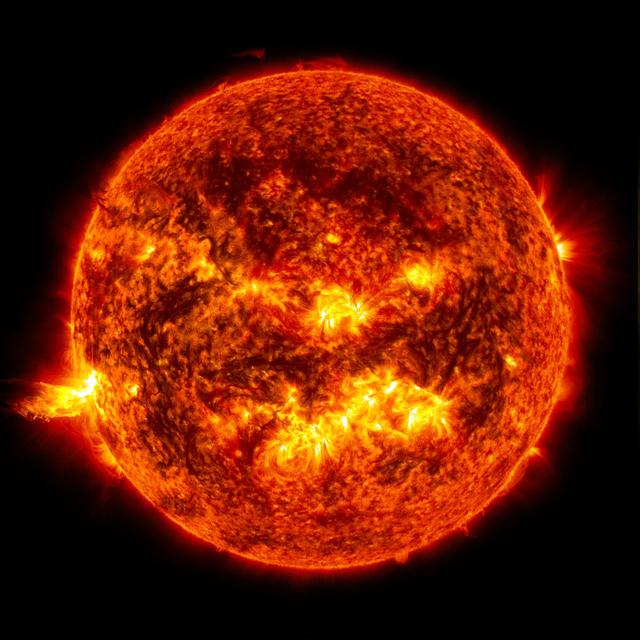

Is it true that stars can be different colours?
Yes. Stars can be white, bluish-white, yellow, orange or red. It's colour depends on the temperature of the star. We normally associate red with hot and blue with cool but with stars it is the other way round. The hottest stars are white or bluish-white, then yellow, orange and the coolest stars are red. (cool being about 3,000 degrees in this case).
Stars also differ greatly in size from giants that would swallow up half our solar system to superdense dwarf stars. When stars are in main sequence it is the larger stars that burn up their fuel more quickly and die. Smaller stars like our sun tend to conserve their fuel and last for much longer.
What is a supernova?
Stars that have managed to suck in enormous amounts of material at birth erupt into life as supergiants. These stars as well as being mammoths burn incredibly fiercely and after a relatively short lifetime will run out of fuel. As this happens the vast mass of the star collapses in on itself and the core becomes incredibly upset and volatile. This causes a tremendous reaction and the star blows itself apart. This explosion is called a supernova: the most cataclysmic event in the universe.
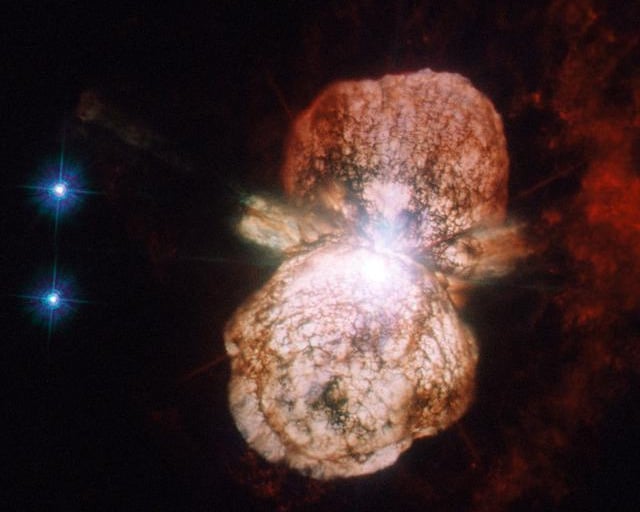

Questions about the Moon
How was the moon created?
Up until the Apollo landings there were a number of competing theories about the origins of the moon. Study of moon rock samples brought back by the astronauts has led to the development of the impact theory. This suggests that the young earth collided with an object about the size of Mars. The debris thrown up from this collision went into orbit around the earth and formed into the moon.
Why does the moon sometimes appear to be very large in the sky?
When you see the moon near the horizon it looks a lot bigger than when it is high up in the sky. This is due to the way the brain perceives size and distance. When the moon is close to the horizon the trees, houses etc indicate to the brain that the moon is a very long way away. When the moon is high in the sky there are no clues to the brain so it concludes that the moon is closer. Since an object's apparent distance determines its perceived size, the moon near the horizon looks twice the size compared to when it is high in the sky.
What causes the different phases of the moon?
The moon is illuminated because it reflects the light from the sun. However only the half of the moon facing the sun is lit up. Th side facing away from the sun is in darkness. How much of the moon we see from earth depends on the angle between the earth, moon and sun. As the moon orbits around the earth we see it grow from a thin crescent to a full disk (or full moon) and then shrink back to a thin crescent again before vanishing for a few days.
How does the moon cause tides on earth?
The gravitational pull of the moon causes the earth's oceans to bulge. This bulge is the high tide. In fact the moon causes the oceans to bulge in two places, the oceans facing the moon and the oceans facing away from the moon. The moon's gravity has a greater effect on the oceans facing the moon than on the earth itself. This causes the water directly under the moon to bulge. The moon pulls the rocky part of the earth more strongly than the water on the far side. This causes the oceans on the far side of the earth to get left behind and the water bulges there as well.
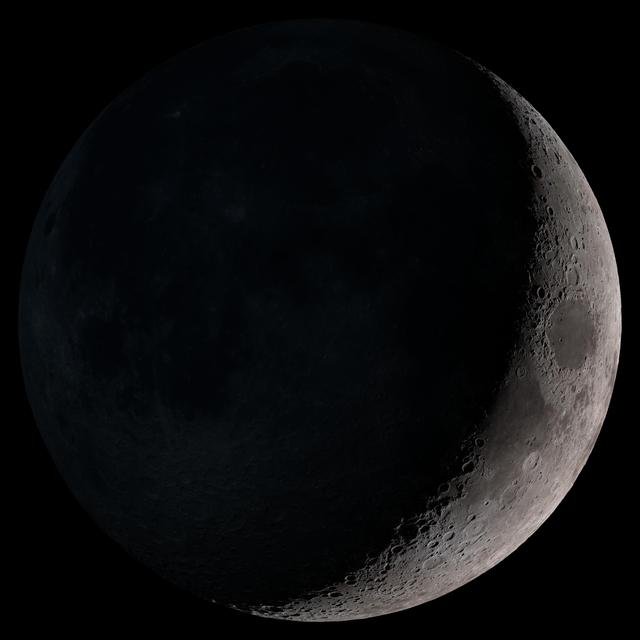

Questions about Galaxies
What is a galaxy?
Stars are not spread out randomly across the universe. They tend to gather together in large groups held together by gravitational attraction. These large groups are galaxies. Every star that is visible when you look up at the night sky is part of our own galaxy.
Galaxies themselves also tend to hang around in groups. Our own galaxy is part of a local group that consists of a few large systems and more than twenty smaller ones. Well beyond our local group astronomers know of galaxies that are 13,000 million light years away.
How many stars are there in a galaxy?
Estimates for our own galaxy put the number of stars at about 100,000 million stars. However our own galaxy is one of the larger systems and most galaxies contain a lot less.
What is the Milky Way?
This is the name given to the misty band of stars that can be seen on a good clear night. This misty band is caused by the shape of our galaxy. When we look at the milky way we are looking along the crowded plane of our galaxy. Although we can't make out individually the billions of stars we are looking at, their combined light makes a pearly glow across the night sky.
Just to make matters a little bit confusing, the Milky Way is also the name we give to our own galaxy.
Is our sun near the centre of our galaxy?
Galaxies are sometimes referred to as great cities of stars. Well if this is the case, our sun (and the earth) is in the leafy suburbs, about 25,000 light years from the bustling galactic centre. That's 25,000 x 9.46 million million km. For us that is an inconceivable distance but in cosmic terms it is a short train ride away.
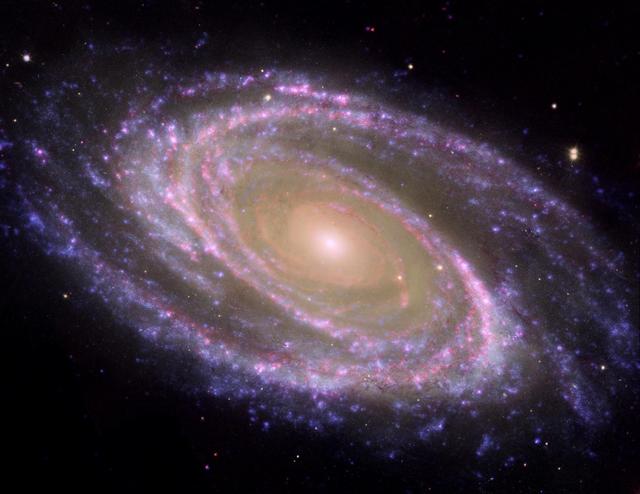

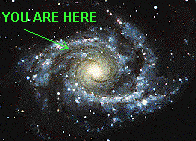

Questions about Meteors
What is a meteor?
A Meteor is the proper name for the streak of light that is usually called a shooting star. Meteors are caused when specks of dust, often the size of grains of sand, dash into the upper atmosphere from space. Moving at up to 45 kilometres per second the friction from travelling through air creates intense heat and they burn up giving off a bright light. Some of these bits of dust are singular pieces of debris flying through the solar system and getting swept up by the planets. Others travel in swarms of meteoric dust. Each time the earth passes through one of these swarms it causes a meteor shower. These groups of meteoric dust are left by passing comets which have had material blown off them by solar winds. The earth crosses the orbit of several comets every year and this is when we see meteor showers such as the Leonids or Perseids.
How many meteors can be seen during a meteor shower?
The term meteor shower is a bit misleading. It suggests that meteors are falling like rain. This isn't the case. What you will find is an increase in the number of meteors over what you would see on an average night. Different showers have different intensities, ranging from 10 to over 100 meteors an hour.
When is the best time to observe meteors?
Unfortunately for most of us who live near towns or cities a lot of the fainter meteors are washed out by light pollution. However during the Perseids shower (25th July to 18th August) or Leonids (15-19th November) you should still be able to see a meteor every few minutes. It is worth spending a bit of time outside during one of the these showers as a bright meteor is one of the most exciting sights in the night sky.
What is the difference between a meteor and a meteorite?
Unlike a meteor which is a grain of dust, a meteorite is a fragment of rock that succeeds in reaching the ground. They are very uncommon and there are no reports of anyone being hurt by a meteorite. They are generally fairly small but one monster (the Hoba West meteorite) which fell in Namibia during prehistoric times weighs in at over 60 tonnes.
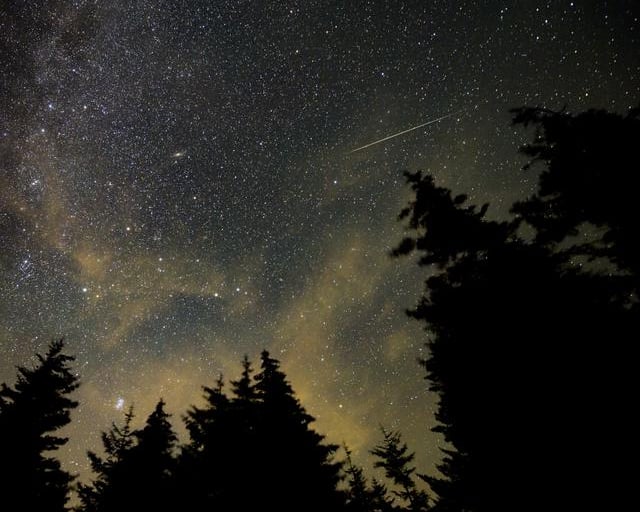

Questions about Comets
What is a comet?
Comets are often described as dirty snowballs. This isn't a bad description. The nucleus of a comet is made up of fragments of rock, ice and other frozen elements such as methane, ammonia and carbon dioxide. The nucleus is surrounded by a cloud of dust and gas. When a comet approaches the sun the head is illuminated by sunlight and some of the dust and gas is blown away by the solar winds. This creates the characteristic tail.
How fast do comets move across the sky?
To be honest until I saw my first comet I thought they flashed across the sky and were gone in a few seconds. This is not the case. Comets appear static in the night's sky. Any apparent movement in position over the course of a night is mostly down to the earth's rotation. Over a period of nights the comet will be seen in a slightly different part of the sky as it continues on it's orbit around the sun.
Does the tail always follow behind a comet?
Another misconception about comets is that as they hurtle through space the tail follows behind. In fact the tail is caused by the solar winds so it always points away from the sun. This means that as the comet moves away from the sun the tail is pushed out in front of it.
Who or what are comets named after?
Comets are generally named after the person or persons that discovered them. The Hale-Bopp comet that appeared bright in our skies in 1997 was discovered in 1995 by Alan Hale and Thomas Bopp. Many comets are discovered by amateur astronomers. While the most powerful telescopes are focused on specific objects at very high power, it is the thousands of amateurs using smaller telescopes to scan the skies that usually see new comets for the first time. Astronomy is probably the last area of science where amateurs can make major scientific contributions from their own homes.
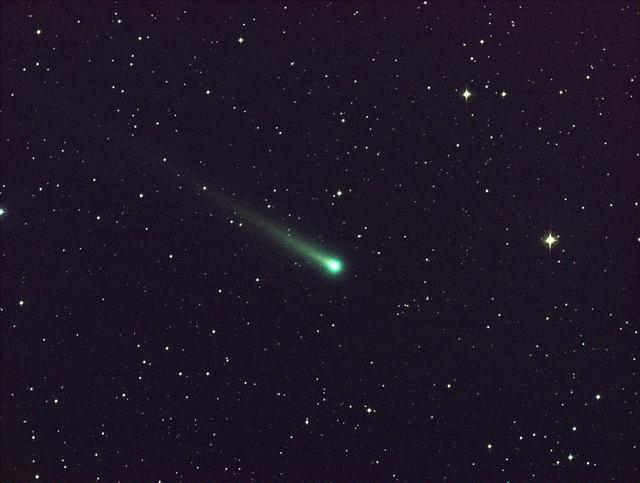

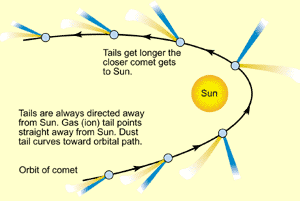

Is the earth in danger of colliding with a comet?
The chances of earth being hit are very remote. Comets are very few in number in the inner solar system. All the orbits of known comets such as Halley's comet do not pose a danger to earth. It is possible that a new comet could be a threat but there is another defence system that protects our planet. The larger outer planets with their strong fields of gravity tend to hoover up a lot of wandering bodies such as comets and this is seen as one of the reasons that life has been able to develop on earth with relatively few interruptions from devastating impacts. One such occurence of a comet colliding with an outer planet happened in 1994 when the comet Shoemaker-Levy plunged into Jupiter. The bruise it gave the Jovian atmosphere was clearly visible from earth.
